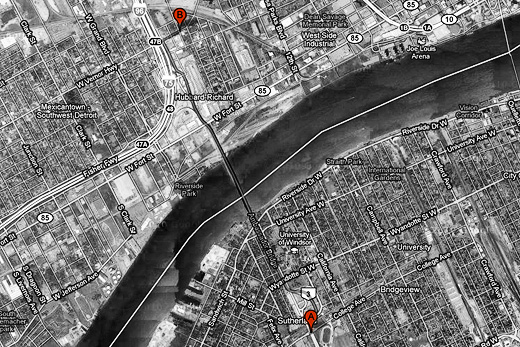
Yesterday, Lee Rodney (Research Director of the Border Bookmobile) and I headed on a short 4km journey.
We visited the fine folks at 555, a volunteer artist-run arts organization providing affordable studios and workspace, gallery space, exhibition programs, arts education programs, and an artist in residency program. We met at their temporary location, while they await the renovations of their new space down the road (the former 3rd police precinct). Those A and B markers in the map above — that’s how close their new building is to the School of Visual Arts.
We met with Monte, Erin, Elizabeth, and Carl, discussing possible collaborations in the not-so-distant future, as well as spending a good amount of time understanding why they do what they do. The scale and type of efforts are perhaps different than those of say, the Powerhouse Project, or the Imagination Station, but their decisions are based on some of the same ideals (and certainly with the same enthusiasm as our own), how do you build a climate of social, aesthetic and community-based investment here and now?
Their programming and artist residencies offer incredibly engaging opportunities for the community and visiting artists, and perhaps most compellingly, they focus on ensuring that “data” created in Detroit can also give back to Detroit.
We’ll be inviting them over soon, you’ll get to meet them and get inspired too, don’t worry.







